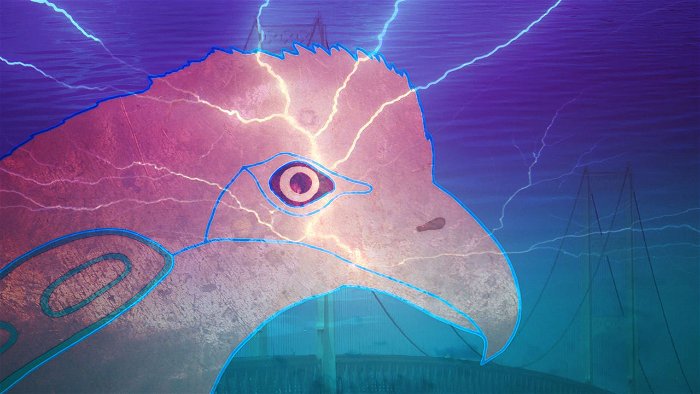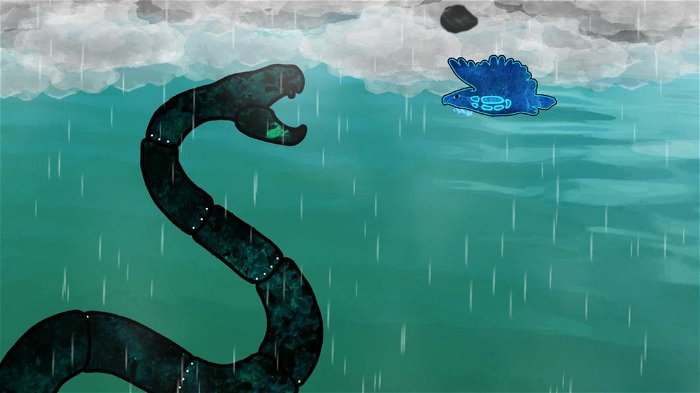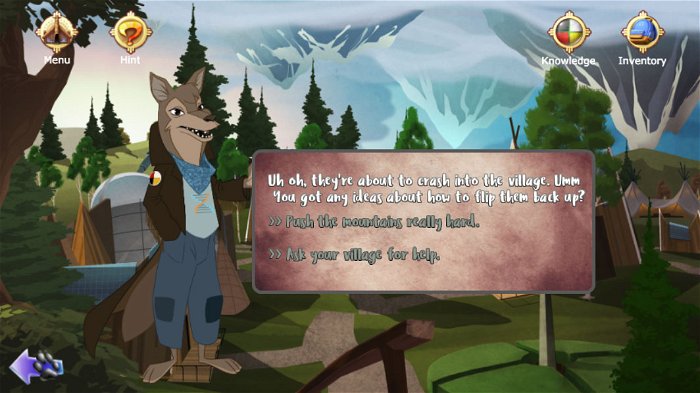ImagineNATIVE is a festival that in the terms of media events is rather new. It gives voices and a platform to indigenous creators, shining a spotlight on people that normally would not be seen within the mainstream media.
It is a festival that draws the work from people such as Elizabeth LaPensée, Ph.D., a professor in the Department of Media and Information at Michigan State University and esteemed game designer.
Her work on Thunderbird Strike and Coyote Quest were featured in this year’s festival, with Thunderbird Strike winning best digital media at the show. In a quick chat before ImagineNATIVE got underway, CGMagazine had a chance to ask Elizabeth about her work in the field of digital media, events like this, and how funding needs to be in place to allow Indigenous creators the freedom to build experiences that tell their stories.
CGM: How has ImagineNATIVE changed over the years and how do events like this help the native community in Media?
Elizabeth LaPensée: Over the years the Digital Art+Cade has grown. In the past they were using the category new media and that category title has changed to digital media, which I think embraces the idea of how new media is not necessarily new so much as it is more integrated into our understanding of how media festivals are coordinated and held and what kind of content goes into that now, and so that’s been a real growth. Before they made this part of the new media exhibition or the new media contest, it’s more like the contest part of it, open to community members. But in doing so they were using community spaces in Toronto, which was great but that meant then that the technology was not quite on par with the needs of the content that was coming into the festival. And so over the last couple of years, they’ve put their effort into actually having genuine technologically advanced spaces that can be open longer hours. That’s been a huge growth for the festival. Before you would dip into that part of the festival but it had only certain hours it was open. They are actually holding panels [and] talks within that space.
They had Invaders, like there was a cartridge, a real cartridge style with the Invaders art on it from Steven Paul Judd and if you went to that space, you got entered in a raffle and you got a chance at winning one of these one of a kind art pieces from Steven Paul Judd and they were doing more work to actively draw people from the film festival side of the festival into the media side. I think there’s been a lot more merging taking place this year and the year before thanks to virtual reality because virtual reality is space where filmmakers can step into more readily than games. I think with games it comes with a different process. a different approach, and a different worldview on interactivity and exposure to interacting with audiences. So virtual reality is a space where media can meet with design and something that is accessible for filmmakers to get into as well, and that has been interesting.
CGM: With a community that’s rather small compared to other Digital media producers, do events like this allow different members of the media to kind of get to know each other and actually help build a stronger base? How do you think this sort of event helps the community and helps the community grow?
Elizabeth LaPensée: For me, it is a place where I always feel safe. So when I go into ImagineNATIVE, I know I’m going to be surrounded by other really incredible international Indigenous creatives—there’s nothing like that experience. When I go to the game developers conference I have a handful of people who I know understand where I’m coming from and who I can communicate with very clearly, and beyond that, it’s a lot of needing to communicate with people in a way that will be understood. There are a lot of situations where you have to face off against stereotypes. I get comments at conferences or at showcases like the game developers conference where someone asked me something like, “You mean American Indians make games?” [chuckles] they’re not meaning that in a harsh way, I know the reality of how Indigenous people are viewed outside of our communities is that we are technologically illiterate and so ImagineNATIVE has a space where I know that I’m not going to run into any of that. Instead, we can focus on the exciting parts of our work and what we’re doing and appreciate one another’s forms of expression and either find people to collaborate with or just really celebrate. You know the celebration is not as much about competition. I mean the competition is there but ultimately it’s really great whoever gets awarded because it’s a whole celebration of everyone’s work.
CGM: You mentioned the feeling of community and of safety that ImagineNATIVE provides. Are there other events around North America that give a similar sense of community and safety?
Elizabeth LaPensée: There was the Vancouver Indigenous Media Arts Festival that pops up and there’s also the Montreal First People Festival but all of these are primarily film festivals. Vancouver’s festival is expanding and they’re doing more work with interactive digital media, but for the most part the only other one that I can think of to name would be the Indigenous Comic-Con that really has the capacity to show games right alongside other forms of media, and so again I think there are several indigenous film festivals but there are not a lot of places where games can be played. Except for the indigenous Comic Con which is held down in New Mexico and a part of the beauty of that event is that it is coordinated by Lee Francis who owns and operates Native Realities Press which is the first Indigenous owned and operated comic publisher. So it really is By the People For the People, but that comes with the understanding that walking into that space and there are going to be many Indigenous creators—there are writers and artists and filmmakers and a wide variety of people coming together during that event.
CGM: So ImagineNATIVE is an event designed and tailored to this audience and able to showcase Indigenous peoples and the native cultures. Would there ever be a push—or do you think there should be a push—to make more presence be known at things like a PAX or GDC? You have to have a massive audience going and to try to capitalize on that audience and bring awareness to a culture that may not be shown in the mainstream as much, or do you feel that these smaller events let these art installations and interactive media be shown without it being kind of overshadowed by everything else that might be going on those events?
Elizabeth LaPensée: The interesting thing about ImagineNATIVE is that it is open to all people and very often you will have many other people who feel that it’s accessible enough that they can come in and watch or interact with the game. The Indigenous Comic-Con is technically open for all but I feel like that is more for Indigenous audiences. That’s what they draw in primarily in that case will have Indigenous cosplayers representing characters that are not Indigenous for example. There’s a wide variety of the kind of interactions that happen there. With ImagineNATIVE it’s our Indigenous Media Arts Festival. It is the largest worldwide that takes place and so because of that, the real brilliance is how it draws people together internationally. By taking a hop, skip, and jump to Canada, people can come from places such as New Zealand and expand the understanding of what it means to be Indigenous here on Turtle Island.
It’s not just talking about First Nations and Native Americans but they’re also talking about Indigenous peoples globally in many different communities. You get an understanding of the cultures and possibly similar structures like struggles that are happening across the world with other communities who also identify as Indigenous—and that’s what’s really great. Like you do get to see and meet people from other places by going there so I think that’s one of the main draws. I think it is valuable for Indigenous communities to have space where we’re all sharing very similar experiences so that the conversations about the kind of work that we’re doing can go much deeper than we would at a mainstream festival or event. We’re already aware of the conditions that we’re living in or struggles our communities may be facing and so we can push beyond that and really focus more on not just simple definitions of ourselves but really get into the kind of work we’re doing and focus on what makes each of us unique within the work that we’re doing.
CGM: You mentioned that it is more valuable, but do you think there is a value to these other events to have a native presence or do you just think it would just get lost in the shuffle?
Elizabeth LaPensée: it’s nice. I mean I think it would be great. I’m working on this actually right now. I just started up through Michigan State University an inclusive game dev initiative and the idea is that we will be hosting talks and workshops here and eventually there will be a showcase of games which involve people of diversity in the making of those games. I think that the work should be in line with what that greater event is about. I think that part of it is that I have definitely had games played at, for example, IndieCade. So one of my games is at IndieCade and that was an interesting experience to be among much more robust games.
I know at IndieCade they are still indie, but the fact of it is my budget has been like nothing, [chuckles] I’ve been working with nothing for a while. It’s really important for our voices to be expressed there also because very often other people take on doing representations of Indigenous people in their game without actually involving Indigenous people. The more we can say, “Uh, Hi! We’re here,” the more we can show how it’s important to involve people and give meaningful roles. I think we really need to impress upon game developers to not just involve Indigenous community members as consultants, but rather build capacity for communities. There are definitely some game companies that are doing that where if they’re going to work on games with Indigenous themes they also do things like run game development workshops for youth in the communities so that they too someday can actually be into these games themselves in whatever capacity they want to. That inspires them to do so and I think that’s what’s most important to me. It’s like really being in this space primarily just to say, “Actually we do exist and we have a creative voice here too and please do involve us in representations of us”.
CGM: Right. Now why it is that ImagineNATIVE is such a special event? Why not more of these events worldwide to give this kind of voice to native populations?
Elizabeth LaPensée: I think it’s saturation and financial support. Canada is a place that actually could put funding into media through the Canada Media Fund. There’s also Bell Media. We don’t get that kind of support. There’s no like, “Hey I’m going to get grant funding to write a film script or a film treatment,” that doesn’t exist on that level of support. Canada Council for the Arts supports this, but there’s a bit of a drop off in the States comparatively. A lot of people down here have to fight for what they get. There’s no way to really get support for it. I should say there is the American Indian Film Festival in California but that’s a different tone, it’s a red carpet event. It’s very different from what ImagineNATIVE is doing.
ImagineNATIVE is more about capacity building and giving people more opportunities. And so they run pitch contests for example where someone can win money to develop their idea further. They also run workshops with youth. But they also run workshops in the context where people can really actually build out their skill. So they also do Project incubators and ImagineNATIVE is much more than a festival. It is also actually facilitating the creation of new work. And that’s where they really stand out and I think that it would be great if there were more of this. New Zealand also has a lot of support for Indigenous media specifically and Maori people have a real strength in continuing to establish the importance of their language and their culture in the land there. I think of all the Indigenous communities that I’m aware of, New Zealand and Canada are at the top of actually providing genuine support of the [creators] and self-determination. I think the other important piece of this is that it’s self-determined work. Someone who is Indigenous is given support to do what they want to do independent of one another. These events are really about being self-determined. You get to have your own voice and say what you want to do.
CGM: What are you bringing to the festival this year? You’re a co-writer on Coyote’s Crazy Smart Science Show and the director and producer on Thunderbird Strike. Can you tell us a bit about those projects and what people should expect?
Elizabeth LaPensée: Yes. So Coyote Quest is the game portion of Loretta Todd’s Coyote’s Crazy Smart Science Show.And that is a point click adventure game which expresses Indigenous science and shows role models in STEM and it is primarily aimed at Indigenous youth. Although it could be played by other youth as well for them to understand how Indigenous science and Western science can actually work towards the same goals and be shared together. This game was an awesome project to work on and I look forward to Loretta Todd’s series continuing. And then there is Thunderbird Strike, which I’m the designer, artist, and writer for and then Adrian Cheater is primarily the programmer for.
And then NÀHGĄ a.k.a. Casey Koyczan did the music for itincluding the soundtrack, sound effects, and voiceovers. Sound effects are a huge part of it but Thunderbird Strike is a 2D side scroller where you are playing as a Thunderbird and you can strike lightning down at animals and people to revive them or mining buildings and vehicles to destroy them. Everything has an equal point value and you receive a Restoration score along with a Destruction score. You can choose to destroy trucks and buildings and pipelines or you can activate animals and people; they are bones or silhouettes and they can come into form by being struck by lightning.
The hope of the game is to pass on Thunderbird stories and bring awareness to issues caused by pipelines.








